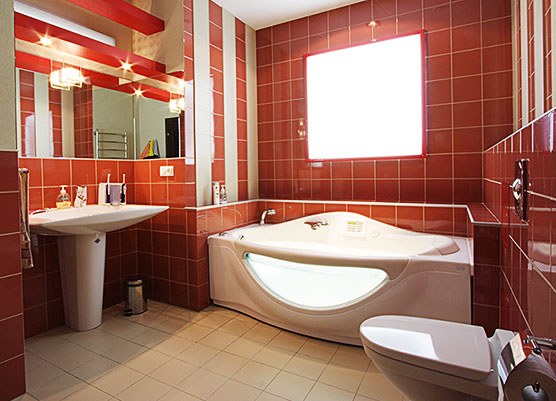You will need
- roulette;
- level;
- - the range;
- a mixer for mixing;
- special grout for joints;
- - sponge of soft foam;
- - a dry mixture or glue;
- - soap solution;
- - putty;
- - spatula with teeth;
- - wooden slats;
- - remote crosses;
- - the brush.
Instruction
1
Before starting, make sure that the walls are strictly perpendicular to the ceiling and the floor, and the surface on which you will lay the tile, fairly smooth. The easiest and fastest way to verify this – check the level. If on the floor or the walls, old tiles, surmount it. And then align the surface under it.
2
Under the alignment, it is assumed the surface layer of plaster or moisture resistant gypsum Board. In the case of drywall, the process is more fast and easy. And to work with plaster you need to have special skills. Don't forget before applying the drywall or plaster to expose the landmarks (beacons) on the level. You can also focus on the vertical layers of plaster. This will help you to make the surface smooth. It should be noted that there is a lot of leveling compounds, which are designed specifically for the preparation of surfaces for laying tiles. Use them certainly possible and necessary, but only in the case when the surface curvature is almost not visible. In other cases, without plaster or drywall will not do.
3
The final stage of surface preparation is priming. However, tiles can be laid on a special adhesive mixture or a strong concrete base, then the surface can not be primed.
4
Start laying tile as soon as you prepare the surface and it will dry out. Be prepared for the fact that most likely a few bars will have to cut. To do this, choose the failed specimens. Before cutting soak the tiles in water. Then take a sharp putty knife or a regular knife, then with a force swipe across the slit several times. Then put the tile on the edge of the wooden beams, the stool and reverse the hands or pliers. This is the easiest method of trimming the tiles at home, but if you have professional equipment, you'd better use them.
5
Put on the lower surface of the tile adhesive. Do it sharp-toothed spatula, trying as hard as possible to scrape her teeth. Because scratches comes in adhesive and the tile is kept much safer. Then using the same spatula, smear the adhesive mixture to the surface and lay on her tile. To the distance between the seams were the same, use the remote crosses.
6
If you notice that any number of the tiles were crooked, you should take up his alignment. But it is better not to move the tile glued, because the glue will come out. So you don't have to do that constantly using a level, check how smooth turned surface.
7
Clean the seams from the glue when all the tiles will be laid. Then proceed to the jointing. Pointing is a special mix that is laid between the seams. It protects from water and moisture, and also played a decorative role. Before grouting make sure the pigment that is contained in the Fugue, does not contaminate the tile. Make the joints very carefully, carefully press the mortar into the joints with a spatula. First move at a right angle, and then cross-motion.
8
The final stage - processing of surfaces with a soap solution. Do it when the tile is laid and dry.
